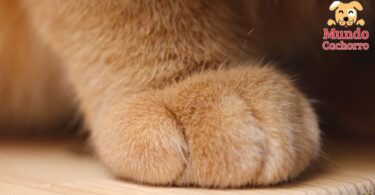Ataxia in cats is a neurological disorder that affects coordination and balance.
Cat owners may be concerned and distressed to see their pet with mobility problems.
While it is crucial to seek veterinary care for an accurate diagnosis and proper treatment, there are some at-home approaches that can complement professional care and help improve your cat’s quality of life.
Indice
Symptoms that your cat is in pain
What is ataxia in cats?
Ataxia is characterized by loss of muscle coordination and can affect different parts of the body.
Symptoms include staggering gait, abnormal eye movements, and difficulty jumping or moving with precision. Ataxia can have a variety of causes, including:
- Neurological problems: Tumors, inflammation or lesions in the brain and spinal cord.
- Infections: Viral or bacterial diseases affecting the nervous system.
- Toxic: Ingestion of toxic substances or exposure to harmful chemicals.
- Nutritional deficiencies: Lack of certain nutrients essential for neurological health.
Importance of veterinary diagnostics
Before attempting any home treatment, it is essential to take the cat to a veterinarian.
Proper diagnosis can identify the underlying cause of ataxia and determine the necessary medical treatment.
Home treatments should be considered as adjuncts to, and not substitutes for, professional veterinary care.
5 signs that your cat could be sick
Home approaches to support ataxia treatment
Home modifications
Making modifications to your cat’s environment can help reduce the risk of injury and improve your cat’s mobility.
Some suggestions include:
- Non-slip surfaces: Place non-slip mats or rugs in areas where the cat frequently walks to prevent slipping.
- Ramps and stairs: Provide ramps or stairs to facilitate access to elevated locations such as beds or windows.
- Safe spaces: Create safe and confined areas where the cat can move without dangerous obstacles.
Nutritional supplements
Some supplements can help improve neurological function and support the cat’s overall health.
It is important to consult your veterinarian before introducing any supplements. Supplements that may be beneficial include:
- Omega-3 fatty acids: Found in fish oil, they can help reduce inflammation and support brain health.
- Vitamin B12: Crucial for neurological health and red blood cell production.
- Antioxidants: Vitamins E and C may help protect nerve cells from oxidative damage.
Physical therapies
Physical therapies can help improve a cat’s coordination and muscle strength.
Some methods to try at home include:
- Gentle massage: Gentle massage can help relieve muscle tension and improve circulation.
- Mobility exercises: Encouraging your cat to move and perform gentle exercises can help maintain muscle strength and flexibility.
Stress management
Stress can worsen the symptoms of ataxia, so it is important to maintain a calm, stress-free environment for the cat.
Some strategies include:
- Consistent routines: Maintain a consistent daily routine for feeding and playing with the cat.
- Synthetic pheromones: Using pheromone diffusers for cats can help create a relaxing environment.
- Toys and environmental enrichment: Provide toys and activities that keep the cat mentally stimulated and distracted.
Adequate food
A balanced, nutrient-rich diet is essential to support a cat’s neurological health.
Be sure to provide high-quality foods that contain all the essential nutrients.
Consulting with your veterinarian about the proper diet can make a big difference in your cat’s overall health.
Signs to know if your cat is sick
Follow-up and monitoring
Closely monitoring your cat’s condition and any changes in symptoms is crucial.
Keep a record of their behavior, mobility and any signs of improvement or worsening. Regularly reporting your cat’s progress to your veterinarian will help adjust the treatment plan as needed. Ataxia in cats can be a challenging condition, but with proper support, it is possible to improve the cat’s quality of life.
While following veterinary treatment, home approaches can supplement care and help manage symptoms. Providing a safe environment, a balanced diet and consistent attention can make a big difference in the well-being of a cat with ataxia.
It is essential to work hand in hand with the veterinarian to ensure that the cat receives the best possible care.








